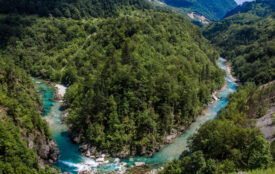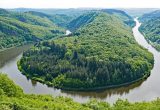Offshore wind farms are refuges for porpoises in the German North Sea
New study shows: Porpoise populations remain stable, offshore wind farms are used as habitat by the marine mammals.
The latest porpoise study by the German Offshore Wind Energy Association (BWO) shows that operating offshore wind farms appear to be attractive refuges for porpoises. Detection rates of the animals are significantly higher within the wind farms than in their immediate surroundings outside the wind farms. This indicates possible reef and refuge effects. Another finding of the study: porpoise populations in the German North Sea are largely stable.
“The data from this study show that porpoises are particularly frequent in wind farms,” explains BWO Managing Director Stefan Thimm. “This is a strong signal for a more objective debate on the environmentally friendly expansion of offshore wind energy.”
Porpoise behavior in the German Bight
According to the study, the development of harbor porpoise populations in the German Bight has been largely stable over the 13-year period studied. Regional differences indicate a moderate shift in harbor porpoise habitat—more pronounced from the northwest to more southeastern areas.
Around ten percent more porpoise sightings were recorded within the wind farms than in the vicinity of offshore wind farms – measured up to 2,5 kilometers outside the farms. The researchers attribute this to a combination of fisheries exclusion and reef effects. Offshore wind turbine foundations form reefs that attract fish. The studies also show that maintenance vessels operating within the wind farms do not deter porpoises.
Offshore wind and species protection compatible
The study results refute blanket assumptions that offshore wind farms have fundamentally negative impacts on marine mammals. BWO Managing Director Stefan Thimm: “The results demonstrate how important it is to have a differentiated and fact-based discussion about marine conservation and the energy transition. If we design the expansion of offshore wind energy in a way that is environmentally friendly, a positive reciprocal effect will emerge.”
The evaluation of the study also supports the thesis that offshore wind energy and species conservation can be reconciled with careful planning – an important finding in view of Germany’s and Europe’s expansion goals.
To the study:
- The study “Harbor porpoise trends and offshore wind farm effects in the German Bight, North SeaAnalysis of CPOD data” is an investigation of the operational phase and complements the two previous porpoise studies conducted by the BWO, which analyzed the impacts of the construction phase of offshore wind farms on porpoises.
- GESCHA I (2016): “Harbour porpoises keep returning: No long-term impact of offshore pile driving in the German Bight on harbour porpoises”
Online at https://bwo-offshorewind.de/gescha-studie-1/ - GESCHA II (2019): “Follow-up study confirms: No measurable effects of offshore pile driving on the harbor porpoise population in the German North Sea”
Online at: https://bwo-offshorewind.de/gescha-2-studie/








